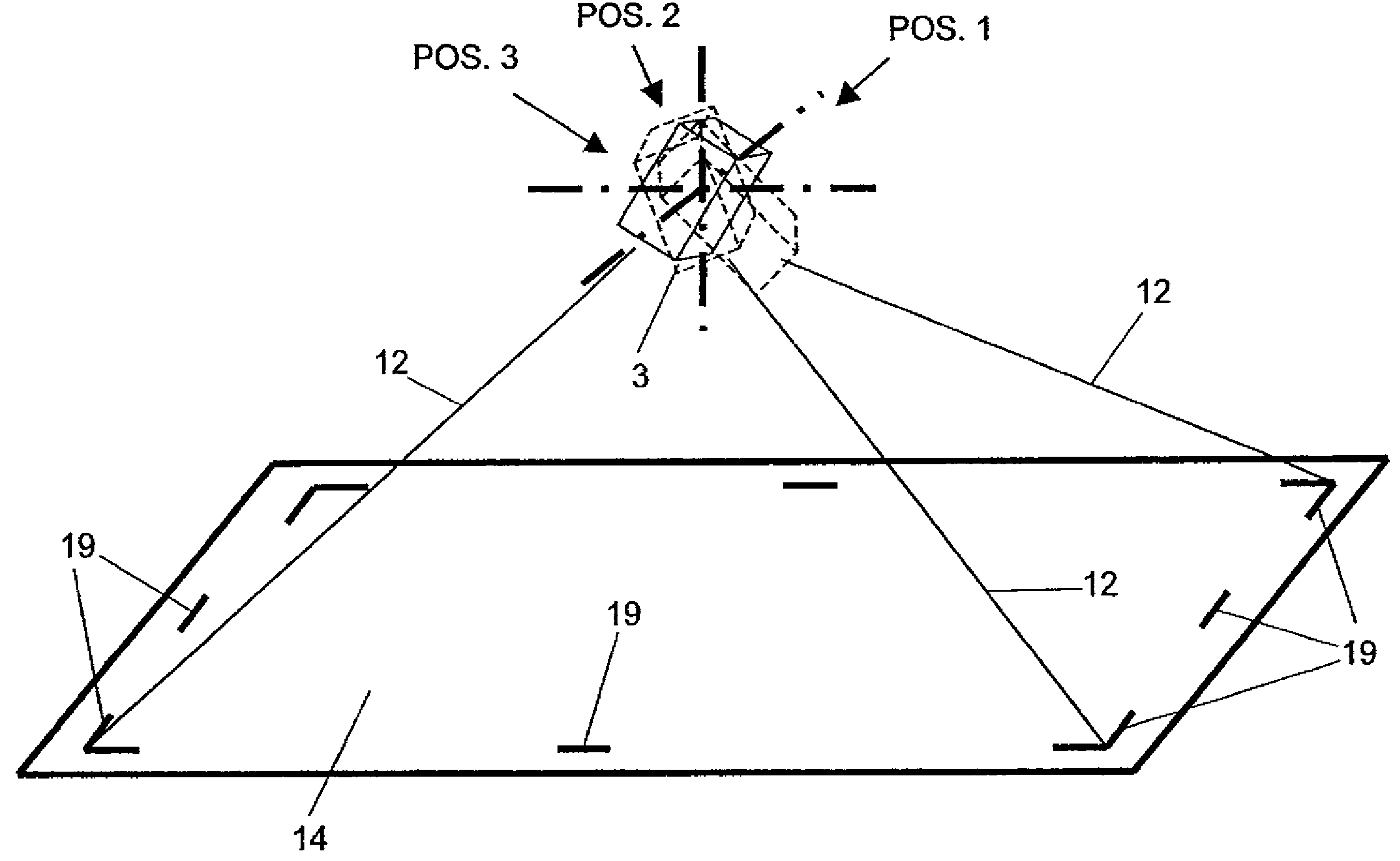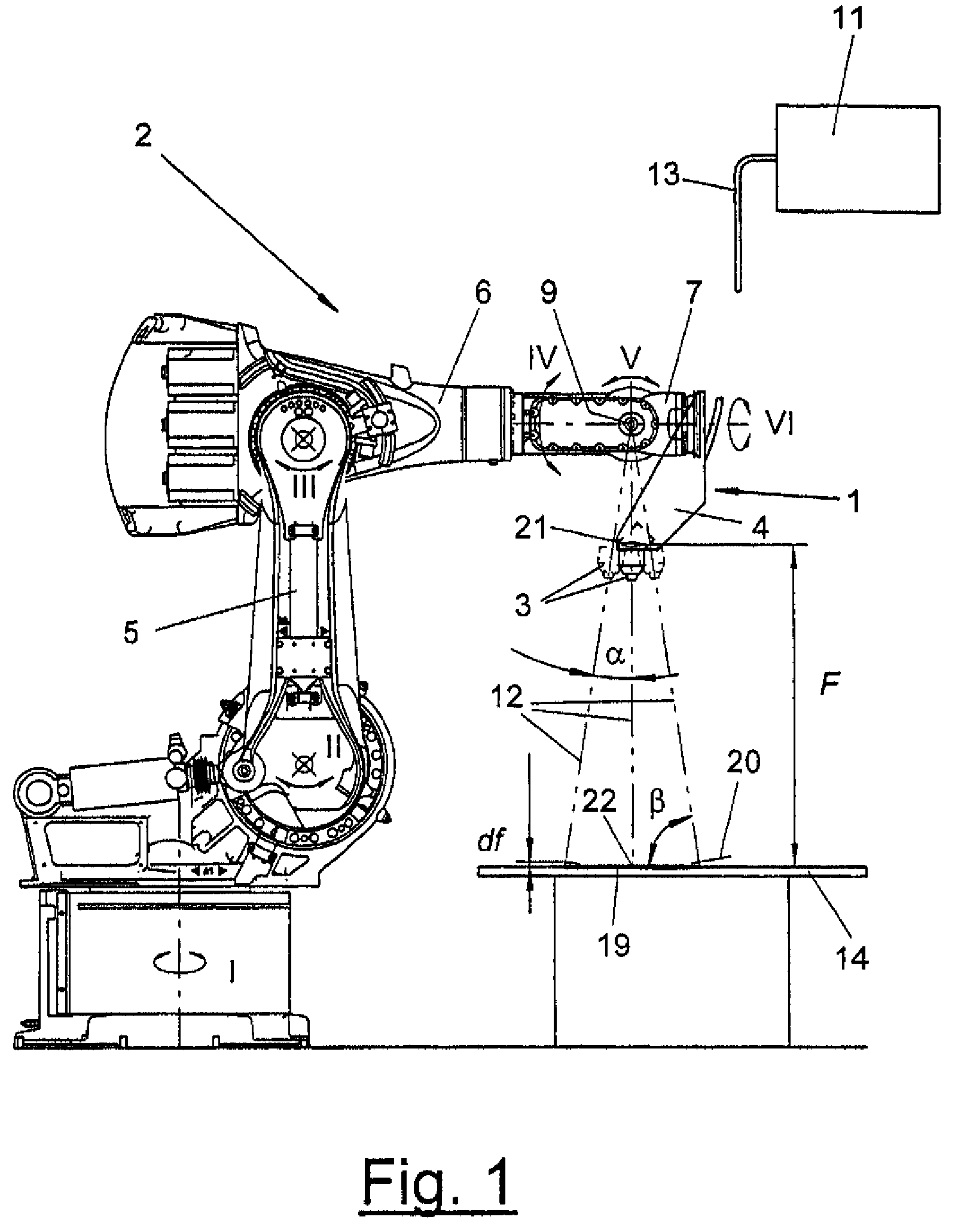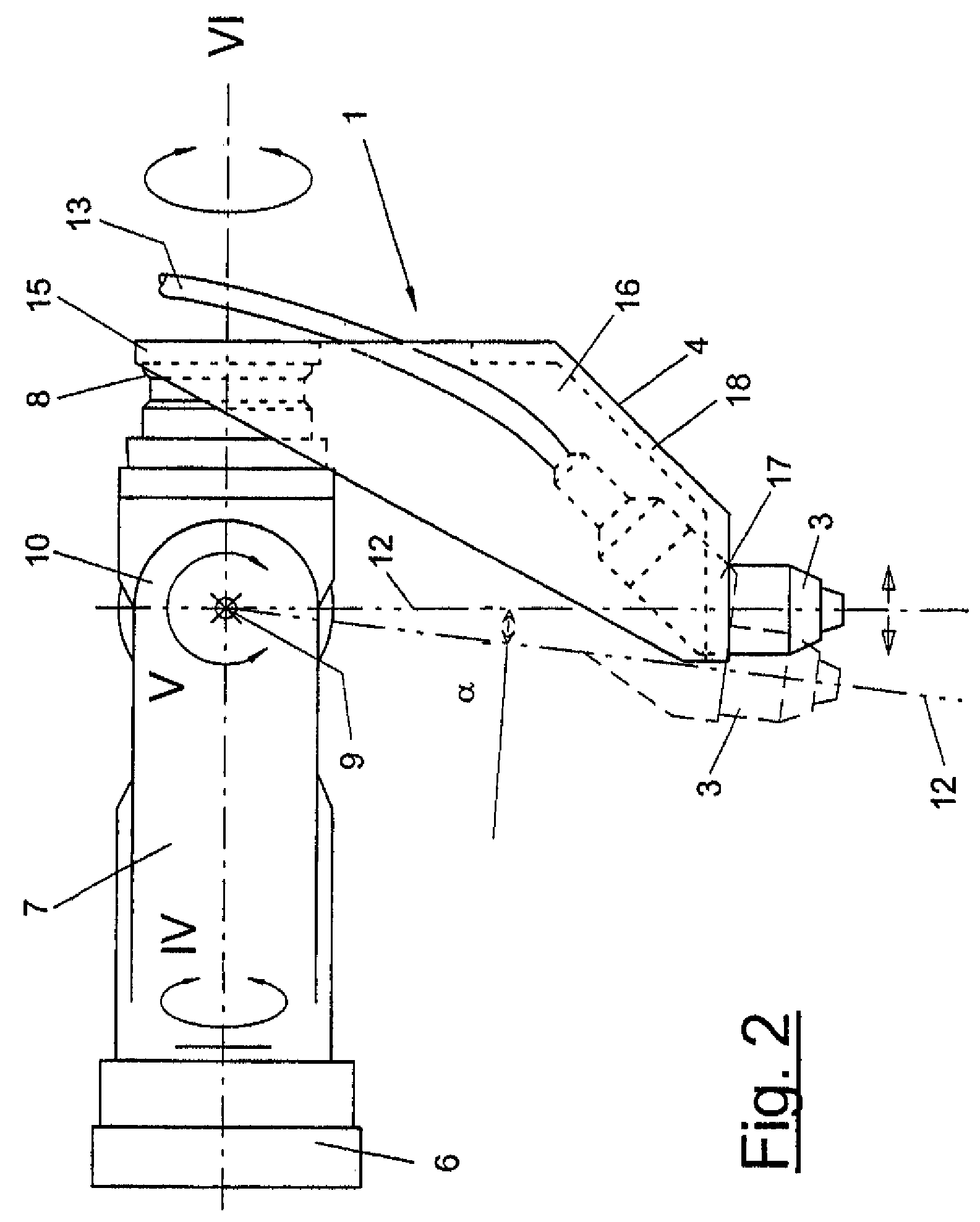Process for the laser beam machining, especially laser beam welding, of components
a laser beam welding and laser beam technology, applied in the field of laser beam welding, can solve the problems of loss of cycle time, short robot performance, choppy motion, etc., and achieve the effect of improving the laser beam welding techniqu
- Summary
- Abstract
- Description
- Claims
- Application Information
AI Technical Summary
Benefits of technology
Problems solved by technology
Method used
Image
Examples
Embodiment Construction
[0023]Referring to the drawings in particular, the present invention pertains to a process for laser machining, especially laser beam welding, of components (14), which may be of any number, type and size. In the preferred embodiment, they are body parts of vehicles and optionally also complete body shells.
[0024]The present invention pertains, furthermore, to a laser welding device (1) or a laser welding station (2) equipped therewith for joining components (14) by means of laser beam welding. It may be, e.g., a geo station or framing station within a manufacturing plant for manufacturing body shells, in which body parts, e.g., a floor part or side panels, etc., are brought into the geometrically correct position in relation to one another, are clamped in this position and joined by means of one or more laser weld seams (19). The laser welding station (2) may be, in addition, a component preparation station, in which, e.g., a side panel group is built up consecutively from a plurali...
PUM
| Property | Measurement | Unit |
|---|---|---|
| focal length | aaaaa | aaaaa |
| length | aaaaa | aaaaa |
| focal length | aaaaa | aaaaa |
Abstract
Description
Claims
Application Information
 Login to View More
Login to View More - R&D
- Intellectual Property
- Life Sciences
- Materials
- Tech Scout
- Unparalleled Data Quality
- Higher Quality Content
- 60% Fewer Hallucinations
Browse by: Latest US Patents, China's latest patents, Technical Efficacy Thesaurus, Application Domain, Technology Topic, Popular Technical Reports.
© 2025 PatSnap. All rights reserved.Legal|Privacy policy|Modern Slavery Act Transparency Statement|Sitemap|About US| Contact US: help@patsnap.com



